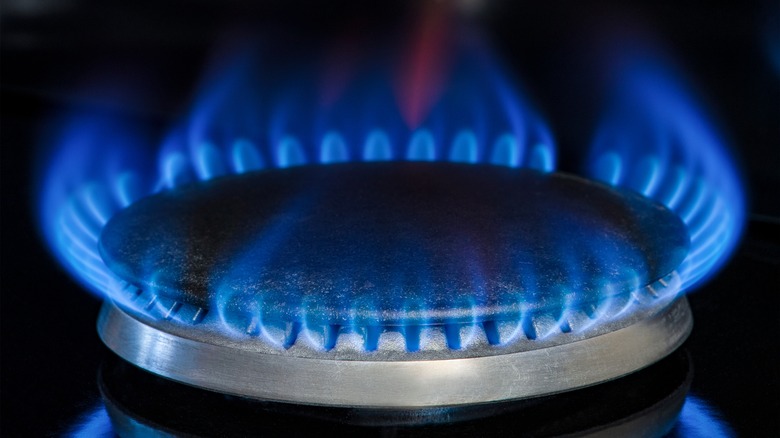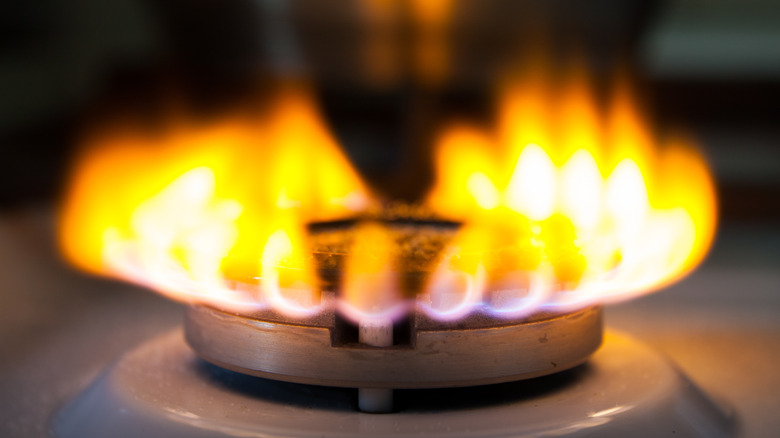What The Color Of Your Gas Stove's Flame Really Means
For the folks who use a gas stove in the kitchen, it is relatively easy to figure out the direct correlation between the size of its flame and the intensity of its heat. Plus, when compared to an induction or electric stovetop, the fact that there is a physical flame helps remind us whether the stove is, in fact, on or off. But another aspect of the gas stove's flame can tell us even more information: Its color.
Ideally, a gas stove's flame should burn blue. This indicates that the combustion process is happening as it should and that oxygen is reacting with the fuel in a safe and efficient ratio. There may be an occasional tiny lick of yellow flame, but as long as the flame is mainly a steady blue, it is good to go.
However, there may be times when the flame burns with pops of yellow and orange, sometimes accompanied by literal sounds of popping. When this happens, it is often temporary, as it usually indicates that there is debris present in the combustion process, and goes away once the debris burns up.
Why is incomplete combustion unsafe?
If the gas stove flame constantly burns yellow and orange, then it is time to call a professional because long-term incomplete combustion is unsafe for a very important reason: The release of too much carbon monoxide.
During combustion, fuel and oxygen combine to create energy, with the byproducts of carbon dioxide and water. When fuel is improperly combusted, it also creates carbon monoxide. When inhaled in large amounts, this colorless and odorless gas is hazardous and potentially deadly. Signs of carbon monoxide poisoning include headaches, dizziness, and even sleepiness as its compounds make their way through the cardiovascular system.
Fortunately, it is relatively simple to prevent carbon monoxide poisoning. Make sure to keep gas stove burners clean and free of debris by clearing spills after cooking. Proper ventilation is a must in the kitchen, which also helps with neutralizing cooking smells. That said, even with proper maintenance of the gas stove, it is still prudent to install a carbon monoxide alarm.
Potential dangers of gas stoves
Many top chefs prefer gas stoves for multiple reasons, the top of which is their speedy response time. It takes a gas stove seconds to heat up compared to their electricity-dependent counterparts. It is also cheaper to maintain and easier to clean.
As convenient as gas stoves may be, they can be responsible for increased levels of nitrogen dioxide, methane, and benzene, in addition to the aforementioned carbon monoxide. These gasses have been proven to be harmful to human health in both the short-term and long-term, increasing risks of asthma and cancer. In addition, its environmental concerns cannot be ignored, especially since gas stoves depend directly on fossil fuels for combustion. S&P Global reported in 2022 that four US states have restricted building gas use, though 20 other states have passed legislation for the opposite by prohibiting local restrictions on building gas use.
Not everyone can afford clean-energy alternatives like induction stoves, so it may be a long time yet before gas stoves become a thing of the past. In the meantime, the least those with gas stoves can do is to avoid these mistakes when using them.


